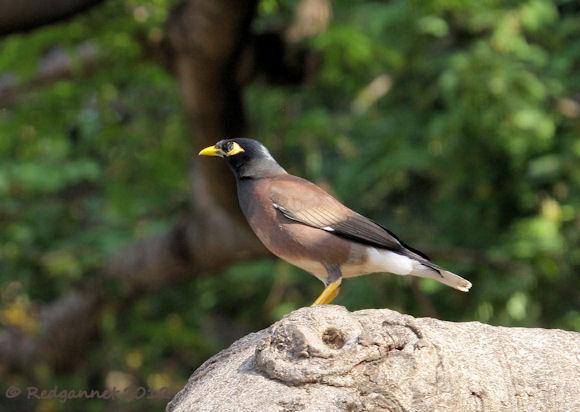Another attempt to find some of the fancy wood-warblers
migrating up the eastern side of the USA has met with almost complete, abject
failure. Philadelphia has not figured largely on Redgannet up until now and I
had hoped to be able to bring some of its treasures to life, but apart from a
few Warbling Vireos, the migration
has passed me by.
Fairmount Park is a great spot to spend a couple of hours, warblers or not and I concentrated my search around Lemon Hill Google Earth ref; 39 58 17N 75 11 17W. My plan was to find a feature that might draw the warblers in. A small wooded hill beside the river seemed to be just the thing, but what do I know?
http://redgannet.blogspot.co.uk/2011/01/delaware-river-philadelphia.html
Visit the dedicated USA and Canada Page for more from the North American continent.
Fairmount Park is a great spot to spend a couple of hours, warblers or not and I concentrated my search around Lemon Hill Google Earth ref; 39 58 17N 75 11 17W. My plan was to find a feature that might draw the warblers in. A small wooded hill beside the river seemed to be just the thing, but what do I know?
Canada Geese were
parading their chicks as they fed on the grassy patches close to the Museum of
Art and House Sparrows chipped from
every bush as I cycled the path that runs alongside the Schuykill River. I made
the journey twice, once on the Sunday evening on arrival and again on the
Monday morning, but I will try to blend them together as one post. The Sunday
evening was very busy with bands playing in the cafes near the river and Monday
morning was naturally much quieter.
Lemon Hill is a subtle mount with its steeper slope rising from the river side. Once up on the top, the most obvious feature is the Lemon Hill Mansion. Roads describe a circular route of nearly a mile if you keep turning right while walking clockwise. American Barn Swallows and Northern Rough-winged Swallows were common and occasionally stopped for a break and a pre-nuptual tidbit.
Lemon Hill is a subtle mount with its steeper slope rising from the river side. Once up on the top, the most obvious feature is the Lemon Hill Mansion. Roads describe a circular route of nearly a mile if you keep turning right while walking clockwise. American Barn Swallows and Northern Rough-winged Swallows were common and occasionally stopped for a break and a pre-nuptual tidbit.
There are plenty of Black Locust trees which I have always
associated with Black and White Warblers. Despite a thorough scanning of the
deeply furrowed trunks and branches, there was not a B&W to be seen. The
season was being observed however and plenty of American Robins were out on the
lawns collecting nesting material.
Brown-headed Cowbirds were getting into the spirit of
spring, displaying with great enthusiasm.
Despite my complaining about the warblers, there were a few
other migrants that had waited around to greet me in Pennsylvania. There were
half a dozen Baltimore Orioles compared against only one Orchard Oriole. A few
sightings of a Blue-grey Gnatcatcher were probably of the same bird and Eastern
Kingbirds were fairly common on exposed snags.
Down on the river, a birdy area just above the weir produced more Warbling Vireos, a Green Heron and the Red-winged Blackbirds. Oh and don't forget the Philadelphia Eagle.
Canada Goose 40, Wood Duck 1, Mallard 6, Double-crested
Cormorant 9, Green Heron 1, Red –tailed Hawk 1, Ring-billed Gull 2, Mourning
Dove 15, Chimney Swift 20, Red-bellied Woodpecker 2, Downy Woodpecker 1,
Northern Flicker 4, Eastern Kingbird 6, Warbling Vireo 8, American Crow 3,
Northern Rough-winged Swallow 40, Barn Swallow 60, Tufted Titmouse 1, Carolina
Wren 2, Blue-grey Gnatcatcher 1, American Robin 60, Grey Catbird 15, Northern
Mockingbird 2, European Starling 60, Cedar Waxwing 35, Chipping Sparrow 3, Song
Sparrow 1, Dark-eyed Junco 1, Northern Cardinal 5, Indigo Bunting 1, Red-winged
Blackbird 10, Common Grackle 40, Brown-headed Cowbird 10, Orchard Oriole 1,
Baltimore Oriole 6, House Finch 4, American Goldfinch 3, House Sparrow 150.
To see more posts from Philadelphia, follow the links below;http://redgannet.blogspot.co.uk/2011/01/delaware-river-philadelphia.html
Visit the dedicated USA and Canada Page for more from the North American continent.



















































